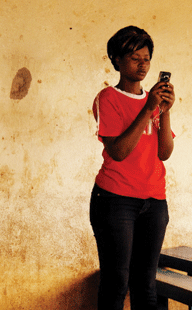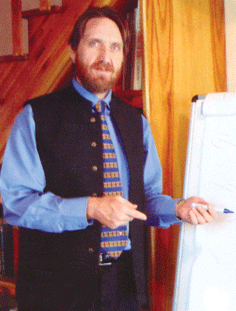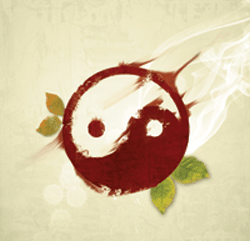Why the World’s Falling Apart, and Why It’s a Good Thing
Author’s Note: After having written for Triple Bottom Line for three years, it is time to string the work together. My work has been about defining the Big Picture, re-imagining new definitions for old concepts, and indicating a path ahead. This is to give a context for social responsibility. If we understand what things are, and how they work, we may be internally motivated to make the right individual and collective decisions. This has been my drift. With this review, the reader may understand the great canvas upon which today’s dramatic events are painted. They will realize that this chaos was predictable all along. Tip: As you read, view the articles online at http://bit.ly/tblramla. Peace.
True Government of the People: It Starts!
As the scenes of a nation-by-nation Arab uprising unfold on the TV screen, I am reminded of the foresight published on the pages of Triple Bottom Line: “The Internet is the government of the commons, which has leveled social, and class and racial and other barriers. For the first time in history, humans across the globe have created a government that is truly a government of the people, by the people, for the people.” (The Internet: True Government of the People; Dec 2008 issue.)
Two years later, the words have rung true. On Facebook and Twitter, people are gathering to take down governments, to form alternative and inclusive governments, and to create bottom-up constitutions. Saudis have taken to the Facebook to create a group, “The people want reform of the system” (in Arabic). This group is proposing a 10-point constitution that includes “public freedoms? and ?the rights of women”.
The point? The change that has been spoken of for so long is finally here. Internet has changed the nations, and it may even begin to reform physical boundaries if need be.
Meanwhile, WikiLeaks has transformed the art of governance using guerrilla tactics. One may say that WikiLeaks opens governments and Facebook & Twitter change governments. The change is not only of a national and international nature, but it is at once local and micro.
Change: All Hands on Board!
That was the point of the June 2010 article, 6point8 Billion: The Citizen Stakeholders. We now have the technology to engage each and every person, potentially, in governance and creative enterprise. No human left behind. Using electronic connectivity, the human specie can develop the inclusive efficiency and enterprise of bee and ant colonies, and we can be as elegant as a shoal of fish that dances in amazing, instantaneous synchronicity.
But with great power comes great responsibility ? and, some fear, great danger. Who will control this suddenly-empowered humanity? Do we not need to return to an era of tightly-controlling super-ethical rulers who rule badly behaving humans through a mix of fear and punishment? No. The times of humanity’s darkness are over (though the opposite seems to be the case). The evolutionary course of humanity has been running on such a path that eventually each person shall be responsible for their own action ? and also have the capability to choose and comprehend their action without the need to turn to a single hero human (or ‘guru’) for their interpretation. This is the highest form of an ethical society. This is not a governance-free society, rather a self-regulating one. In such a society, the core unit is an individual ? their aspirations, enterprise, and the benevolent-for-others path that they take in order to both thrive personally and do well to the other. This individual can only thrive in a hyper-connected world with instant accountability on the basis of a benevolent intent.
I Am Here to Give’
What is a benevolent intent? The May 2008 interview, Intent ? Care & Growth, with transformation consultant Etsko Schuitema answers: Intent is of two types ? being here (in this life) to give, or being here to take. The former intent is benevolent, and the latter, malevolent. It is not as though human beings must not receive from the world. Indeed, being receptive is a subtle quality of character. The difference in what a person pays attention to: the receiving part of the cycle, or the giving part?
The ideal collective ethic is that each being pays attention to what it has to give, to offer. In that case, the rightful receivers will automatically receive ? and, in turn, they will give forward. (And when they do not receive their right, they struggle with incremental levels of force. This is just and fair.)
The cycle of life, in fact, starts with giving, not taking. That is the premise of the essay How Collaboration Can Save the Planet ? and Your Business (Feb 2009). “Everything on this planet is part of a cycle of birtheath-regeneration. There is a water cycle, a carbon cycle, a consumption cycle. Money, too, revolves. It is spent-earned-spent. Each cycle has a starting point, and that point is ‘contribution’.” The effortless continuation of these cycles, and the deliberate removal of blocks that arise, is what Sustainability essentially is. Why We’re Failing to Sustain ? and How Can We Succeed Right Now (July 2009) takes this theme further, and shares how Sustain-ability is not about ‘a very long time’. It is about presence, about doing things right in the moment. Only then will eternity take care of itself. For what is eternity, but a string of single moments?
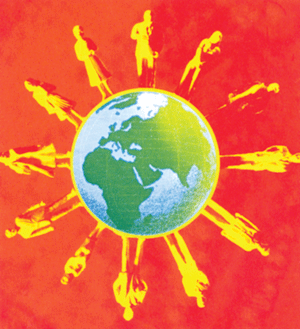
From Scarcity to Abundance
This shift to being concerned with giving, however, is difficult for some people. This may more likely be the case in a society that is marked with oppression and a lack of communal care. The individuals in such a society may perpetually experience a state of crisis, a lack of due attention. How can such a person make a shift to being a part of the flow of life (‘Sustainability’)? Why would not people be compelled to act selfishly? This is a genuine question, an authentic state of (sorry) affairs.
The answer may lie in shifting to an abundance perspective. The August 2010 Ramadan special article, This Ramadan, Count Your Riches: Scarcity to Abun-dance Perspective, sheds a surprising light on how accessible is it to shift to an abundance mindset with a simple question: “What do I have, right now, to get where I want to be?”
I will take a moment to swear for the effectiveness of this simple question by sharing my own story. I was thinking about my project Pakistan Changemakers Hub (http://changemakers.pk), and it occurred to me that this is the question a changemaker asks, versus a change-awaiter who is focused on needs. As I picked this thought to expand in the Ramadan article, I felt surprised by what I was writing: shifting from focusing on what one needs to what one has. I asked myself: how would that change my own life?
I realized I do not need another degree to start a new career; rather, I am enjoying the process of teaching myself a creativity course. I did not, after all, need another creative space to rent, too. My own house has become the backdrop of video productions, and I have finally realized that I prefer to toy with the Internet over traditional media in order to move an audience. (Before this insight, I wasn’t making focused use of the media I was advocating!) Now, I can create with more focus, and less distraction and waste of energy. A focus of what I needed was depleting my energy on search; a focus on what I have has brought me back to creation. As an extra reward, the process itself has become a continuous joy.
Asking this question is just as applicable to corporations. Or nations. Or groups of any kind. Focus on assets rather than needs. One would be surprised even further: they may find that what they considered a liability and a burden that was not leaving them alone was indeed their asset all along! The other August 2010 story, Textured, Not Flat, explored a subject that is at once dear and taboo to many: the subject of one’s family and community as one’s asset, not a liability, as one engages in creation.
Caring Co-Creation
Creativity (which is perhaps the real thing that is referred to by the much smaller concept of economic activity) is an embedded human trait. All humans create. Yet somehow the world of creativity has shrunk to refer only to ‘economic activity’, and that has shrunk further to only mean ‘jobs’. By this line of thinking, those who do not have jobs are not participating in creative activity. Enter: families. Mothers engaged in caring for children, people who are supporting other people who do jobs, and others such who create, but are not necessarily employed or selling. Families also make mobility less likely, and somehow, jobs can be dispersed in geographical areas that one may not even prefer to work in, but one must relocate to because of employment.
There is not anything necessarily wrong or evil about this. It is only that this was a less-than-perfect system which did not fully accommodate the needs of those who would balance freedom with (personal) growth and the ability to create.
This requires several spinal adjustments for the society. First, the issue of mobility is now largely solved through the Internet. Also, work has restructured such that one person can do the multi skilled job of an
organization (Future Scape: An Organization of One; July 2008). Secondly, if creativity is seen as more than ‘having a job’ but rather as value addition and service, more people will be relieved of the burden of feeling and acting uncreative. This re-definition may foster greater creativity within families and communities, where some members currently lie dormant as ‘reserves’, making no good of their talent because there is no attention on them, no opportunity for them. Third, seeing families and communities as resources rather than as liabilities can yield several benefits to each creative member of the family: this ranges from psycho-social relief to lower carbon footprint to the opening of new possibilities of doing projects with people who are most willing and available to one, and with whom there is a natural relationship of care, trust, and interdependency. The family and the community as a creative unit is an untapped, phenomenal force of benevolent change in the world. The key factor is CARE.
This care-based co-creation is the subject of ‘Service’ Lets the World Stay Round (March 2010). If we create to serve, the needs of individuals in the social group will be spontaneously fulfilled.
A self-organizing, coherent system will arise which will simultaneously fill need gaps and create less junk on the planet.
The question now arises: what is my community? The answer is: how far can you see?
From ‘The Individual’ to ‘The World’
The template for seeing the individual in the context of their family and society and ‘world’ is presented in The People-Centered Model of Business (March 2008). In this simple visual model, the individual “I” is at the center, with four life-zones mapped around them: the spiritual zone, the personal-familial zone, the
socioeconomic zone, and the ecological-political zone. Premise? All this activity, which I called ‘business’, owes to the presence of the individual. This is a tool first and foremost for seeing ? seeing the society in terms of its individuals, and study them in the four life zones.
Perhaps I should rename this tool The Person-Generated Model of Creativity. I never felt it had quite the right name. I did define business as ‘busy-ness of life’, which must have been my then-word to refer to the big elephant in the drawing room: CREATIVITY!
Our Future: Collective Creativity
The story comes full cycle: why are humans tearing down the boundaries? Boundaries of what, and for what? I am willing to bet that it is a frustrated creative force at work. The Internet has unleashed the giant of human potential. It can no longer be contained within the bounds of conventions. The nature of the struggle of various peoples is different; their direction is the same.
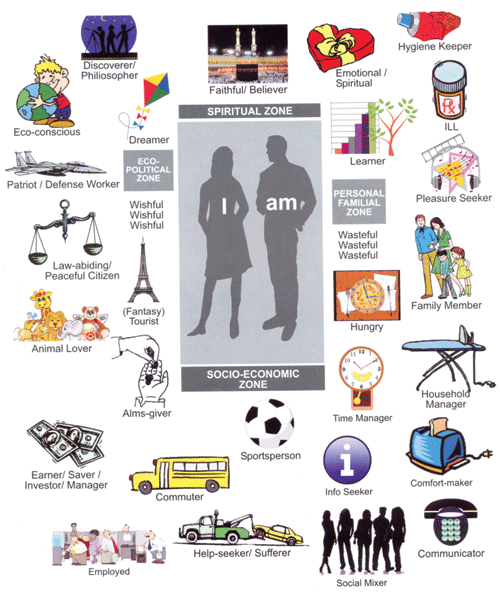
Our world is not operating in a balance right now. To redress the drastic imbalance, we are applying patchwork fixes ? such as the Giving Pledge by Bill Gates, Warren Buffet, and other billionaires (Giving: The New Imperative; Oct 2010). Currently, these fixes are needed. Ultimately, humanity needs to move beyond this historical see-saw of injustice/ drastic redressing.
Humanity needs to move, with each person on board, towards collective creativity.


